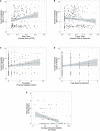A New Look at Infant Problem-Solving: Using DeepLabCut to Investigate Exploratory Problem-Solving Approaches
- PMID: 34819894
- PMCID: PMC8606407
- DOI: 10.3389/fpsyg.2021.705108
A New Look at Infant Problem-Solving: Using DeepLabCut to Investigate Exploratory Problem-Solving Approaches
Abstract
When confronted with novel problems, problem-solvers must decide whether to copy a modeled solution or to explore their own unique solutions. While past work has established that infants can learn to solve problems both through their own exploration and through imitation, little work has explored the factors that influence which of these approaches infants select to solve a given problem. Moreover, past work has treated imitation and exploration as qualitatively distinct, although these two possibilities may exist along a continuum. Here, we apply a program novel to developmental psychology (DeepLabCut) to archival data (Lucca et al., 2020) to investigate the influence of the effort and success of an adult's modeled solution, and infants' firsthand experience with failure, on infants' imitative versus exploratory problem-solving approaches. Our results reveal that tendencies toward exploration are relatively immune to the information from the adult model, but that exploration generally increased in response to firsthand experience with failure. In addition, we found that increases in maximum force and decreases in trying time were associated with greater exploration, and that exploration subsequently predicted problem-solving success on a new iteration of the task. Thus, our results demonstrate that infants increase exploration in response to failure and that exploration may operate in a larger motivational framework with force, trying time, and expectations of task success.
Keywords: DeepLabCut; automated behavioral analysis; cognitive development; exploration; infant development; motion capture technology; problem solving.
Copyright © 2021 Solby, Radovanovic and Sommerville.
Conflict of interest statement
The authors declare that the research was conducted in the absence of any commercial or financial relationships that could be construed as a potential conflict of interest.
Figures





Similar articles
-
Newly walking infants' night sleep impacts next day learning and problem solving.Adv Child Dev Behav. 2021;60:57-83. doi: 10.1016/bs.acdb.2020.08.002. Epub 2021 Feb 11. Adv Child Dev Behav. 2021. PMID: 33641800
-
Infants rationally decide when and how to deploy effort.Nat Hum Behav. 2020 Apr;4(4):372-379. doi: 10.1038/s41562-019-0814-0. Epub 2020 Jan 20. Nat Hum Behav. 2020. PMID: 31959925
-
How to solve novel problems: the role of associative learning in problem-solving performance in wild great tits Parus major.Anim Cogn. 2024 Apr 12;27(1):32. doi: 10.1007/s10071-024-01872-8. Anim Cogn. 2024. PMID: 38607427 Free PMC article.
-
The developmental origins of naïve psychology in infancy.Adv Child Dev Behav. 2009;37:55-104. doi: 10.1016/s0065-2407(09)03702-1. Adv Child Dev Behav. 2009. PMID: 19673160 Review.
-
Personality and problem-solving in common mynas (Acridotheres tristis).Behav Processes. 2017 Jan;134:87-94. doi: 10.1016/j.beproc.2016.09.013. Epub 2016 Oct 4. Behav Processes. 2017. PMID: 27717852 Review.
Cited by
-
After 150 years of watching: is there a need for synthetic ethology?Anim Cogn. 2023 Jan;26(1):261-274. doi: 10.1007/s10071-022-01719-0. Epub 2022 Nov 29. Anim Cogn. 2023. PMID: 36445574 Free PMC article. Review.
-
Early social communication through music: State of the art and future perspectives.Dev Cogn Neurosci. 2023 Oct;63:101279. doi: 10.1016/j.dcn.2023.101279. Epub 2023 Jul 27. Dev Cogn Neurosci. 2023. PMID: 37515832 Free PMC article. Review.
References
-
- Adolph K. E., Eppler M. A., Marin L., Weise I. B., Wechsler Clearfield M. (2000). Exploration in the service of prospective control. Infant Behav. Dev. 23 441–460. 10.1016/S0163-6383(01)00052-2 - DOI
-
- Bayley N. (2006). Bayley Scales of Infant and Toddler Development, 3rd Edn. San Antonio, TX: Harcourt Assessment.
LinkOut - more resources
Full Text Sources
Miscellaneous

